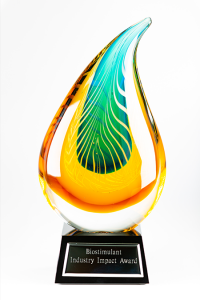 To help increase awareness about sustainable agriculture production, Bio Huma Netics, Inc., (BHN) is sponsoring a FarmProgress course for Certified Crop Advisers (CCAs) and Pest Control Advisers (PCAs) in the United States and Canada.
To help increase awareness about sustainable agriculture production, Bio Huma Netics, Inc., (BHN) is sponsoring a FarmProgress course for Certified Crop Advisers (CCAs) and Pest Control Advisers (PCAs) in the United States and Canada.
This free online continuing education course, titled “Organic/Sustainable Agriculture Production -2022” aims to help working professionals learn about sustainable farming practices and pest management without the use of synthetic chemicals.
During the training, participants will learn about most common pests in organic/sustainable agricultural systems and current methods of controlling insect pests, weeds, and diseases in a range of organic crops grown in the United States.
The two-hour duration course is divided into ten sections and allows participants to complete it at their own pace.

 Join us in celebrating the world’s farmers. They have set themselves the almost impossible task of feeding more and more people while using less land and fewer resources.
Join us in celebrating the world’s farmers. They have set themselves the almost impossible task of feeding more and more people while using less land and fewer resources. We lost Jason Garcia this week, his life cut short way too soon.
We lost Jason Garcia this week, his life cut short way too soon. In its May 2021 issue, Frontiers in Plant Science published a research article by BHN Humic R&D Lab scientists Dr. Hiarhi Monda, Ryan Fountain, and Dr. Richard T. Lamar in collaboration with Dr. Amy McKenna of the National High Magnetic Field Laboratory, Ion Cyclotron Resonance Facility, Tallahassee, Fla.
In its May 2021 issue, Frontiers in Plant Science published a research article by BHN Humic R&D Lab scientists Dr. Hiarhi Monda, Ryan Fountain, and Dr. Richard T. Lamar in collaboration with Dr. Amy McKenna of the National High Magnetic Field Laboratory, Ion Cyclotron Resonance Facility, Tallahassee, Fla. Bio Huma Netics, Inc. (BHN), localizada em Gilbert, Arizona, é a vencedora do Prêmio de Impacto na Indústria de Bioestimulantes de 2019. O prêmio foi entregue no Biostimulant CommerceCon em Atlantic City, New Jersey, pela AgriBusiness Global e pela sua empresa-mãe, a Meister Media Worldwide. Este prestigiado prêmio anual é atribuído à empresa que um painel julgou como a melhor forma de alavancar a inovação em produtos bioestimulantes, implementou com sucesso uma estratégia de distribuição e implementou uma campanha de marketing e comunicação de mudança. O prêmio atribuído inclui um pacote de mídia integrado avaliado em $25.000 USD.
Bio Huma Netics, Inc. (BHN), localizada em Gilbert, Arizona, é a vencedora do Prêmio de Impacto na Indústria de Bioestimulantes de 2019. O prêmio foi entregue no Biostimulant CommerceCon em Atlantic City, New Jersey, pela AgriBusiness Global e pela sua empresa-mãe, a Meister Media Worldwide. Este prestigiado prêmio anual é atribuído à empresa que um painel julgou como a melhor forma de alavancar a inovação em produtos bioestimulantes, implementou com sucesso uma estratégia de distribuição e implementou uma campanha de marketing e comunicação de mudança. O prêmio atribuído inclui um pacote de mídia integrado avaliado em $25.000 USD.